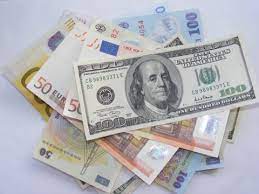
Table of Contents
Nominal Effective Exchange Rate
Nominal Effective Exchange Rate (NEER) refers to the value of a country’s currency in relation to a basket of foreign currencies, weighted by the importance of each country in the country’s international trade. The basket of currencies can vary depending on the purpose of the calculation, but it typically includes the currencies of major trading partners. NEER is calculated using a weighted average of the exchange rates of the basket currencies.
Real Exchange Rate
Real Exchange Rate (RER) refers to the value of a country’s currency relative to the value of goods and services produced in that country, in relation to the same basket of foreign currencies. RER takes into account the differences in the prices of goods and services between countries, as well as the exchange rate. It is calculated by dividing the NEER by the ratio of the domestic price level to the foreign price level.
Differences
The difference between NEER and RER is that NEER measures the exchange rate in nominal terms, while RER measures the exchange rate in real terms, adjusted for differences in inflation rates between countries. NEER reflects the relative strength or weakness of a country’s currency against a basket of foreign currencies, while RER reflects the relative cost of goods and services between countries.
For example, if the NEER of a country’s currency increases, it means that the currency has appreciated in value relative to the basket of foreign currencies, making exports more expensive and imports cheaper. On the other hand, if the RER of the same currency increases, it means that the currency has become relatively more expensive in terms of domestic goods and services, making exports less competitive and imports more expensive.
In general, a high NEER indicates a strong currency, which can lead to a decrease in exports and an increase in imports. Conversely, a low NEER indicates a weak currency, which can lead to an increase in exports and a decrease in imports. A high RER indicates that domestic goods and services are relatively expensive compared to foreign goods and services, which can lead to a decrease in exports and an increase in imports. Conversely, a low RER indicates that domestic goods and services are relatively cheap compared to foreign goods and services, which can lead to an increase in exports and a decrease in imports.
| Nominal Effective Exchange Rate (NEER) | Real Exchange Rate (RER) | |
|---|---|---|
| Definition | The value of a country’s currency in relation to a basket of foreign currencies, weighted by the importance of each country in the country’s international trade | The value of a country’s currency relative to the value of goods and services produced in that country, in relation to the same basket of foreign currencies, adjusted for differences in inflation rates between countries |
| Calculation | Using a weighted average of the exchange rates of the basket currencies | Dividing the NEER by the ratio of the domestic price level to the foreign price level |
| Purpose | To measure the relative strength or weakness of a country’s currency against a basket of foreign currencies | To measure the relative cost of goods and services between countries, adjusted for exchange rate and inflation rate differences |
| Indicates | The exchange rate in nominal terms | The exchange rate in real terms |
| Impact on trade | A high NEER can lead to a decrease in exports and an increase in imports, while a low NEER can lead to an increase in exports and a decrease in imports | A high RER can lead to a decrease in exports and an increase in imports, while a low RER can lead to an increase in exports and a decrease in imports |
Conclusion
In conclusion, understanding the concepts of NEER and RER is crucial for businesses and individuals involved in international trade and investment. Both NEER and RER provide important information about the relative strength or weakness of a country’s currency and its impact on trade flows. While NEER measures the exchange rate in nominal terms, RER measures the exchange rate in real terms, adjusted for differences in inflation rates between countries.
Important Links